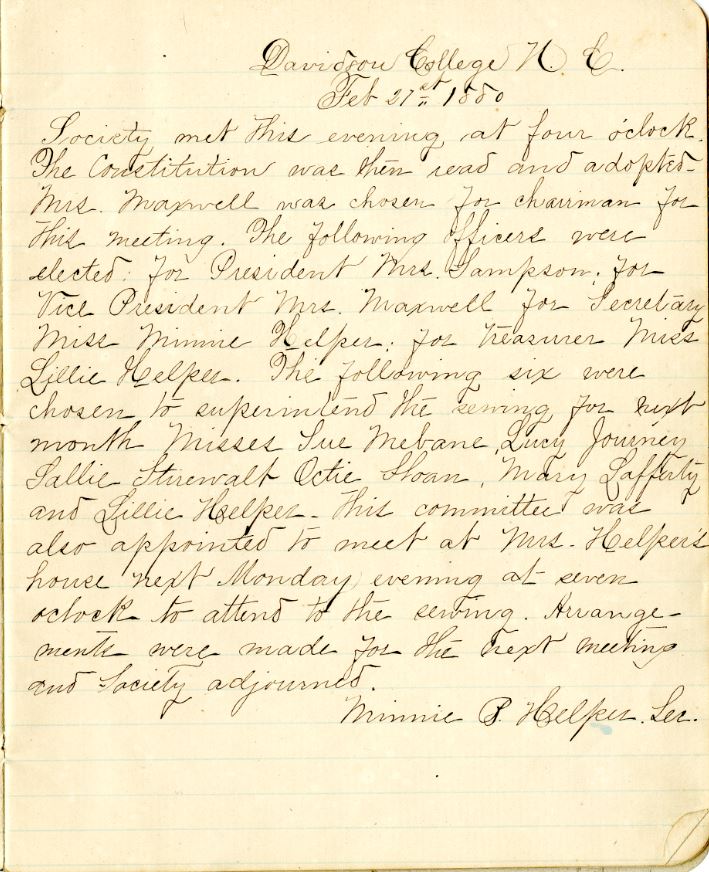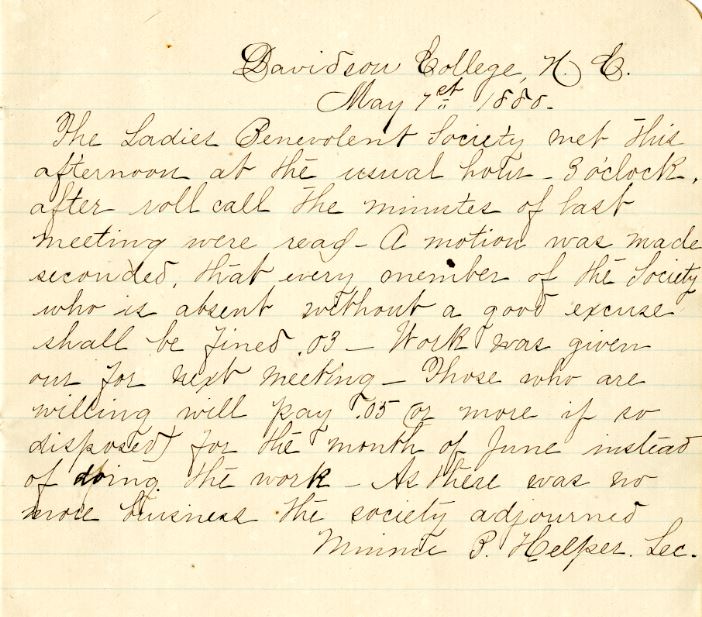In Fall 2019, Archives, Special Collections, & Community (ASCC) had the privilege of working with Dr. Rose Stremlau’s “HIS 306: Women and Gender in U.S. History to 1870” course. Over the course of a semester, students researched the history of women and gender in the greater Davidson, North Carolina area using materials in the Davidson College Archives and other local organizations. The following series of blog posts highlights aspects of their research process.
Despite popular belief, the first Davidson women did not suddenly appear on campus the day the college became co-educational. Women have always played an important part in the town formerly known as Davidson College, long before the trustees voted to allow women to enroll as degree-seeking students in 1972. The involvement of women in community life is most obviously seen in their contributions to and leadership within Davidson College Presbyterian Church, a cornerstone of campus and community social life particularly in the nineteenth century.

One such example of women influencing and participating in communal religious life in Davidson is the Ladies Benevolent Society. Officially founded on February 27th, 1880 by a group of local church women (primarily wives of college faculty or local businessmen), the organization aimed to serve the community, largely through sewing and donating clothes.1 As recorded in the February 1880 minutes, the group would usually meet at a member’s house where attendance would be taken, the minutes of the previous meeting would be read, the sewing work would be distributed, and the next meeting time would be agreed upon.2 Most notably, those women in the society who did not receive any sewing work for the week and who were able would pay five cents to this society instead.3
This relatively concise primary source contains clues about how women organized and wielded power within their social sphere. Within this collection of recorded meeting minutes spanning from February of 1880 to August of 1881, the women discuss finances, organizational questions, and the appointment of various women to various roles within the society. At a time where women would have been expected to remain within their separate sphere of the home while it would have been socially acceptable for men to engage in conducting business and managing finances, the women of this society were able to exercise power through organizing independently of their husbands for religious purposes.

When decisions about personal finances are recorded in the Ladies Benevolent Society minutes, it is only in reference to the particular woman who is a member of the society, not mentioning husbands as a consideration. For example, Secretary Minnie Helper writes on May 7th, 1880, “Those who are willing will pay .05 or more if so disposed for the month of June instead of doing the work…”4 Though to what extent is unclear, the women of this society had influence over how money in their family was spent, and it appears they were confident enough in that influence to write it into the regulations of the Society. Additionally, this addendum points to the value of these women’s unpaid labor. The five cent donation was seen as equivalent to the sewing and garment work other women were performing for the Society, demonstrating one way the work of women functioned within the small-town economy.
The Ladies Benevolent Society serves as an example of how women in nineteenth-century Davidson broke the mold that dictated the spheres that women of their time were expected to operate within.

Speak Your Mind